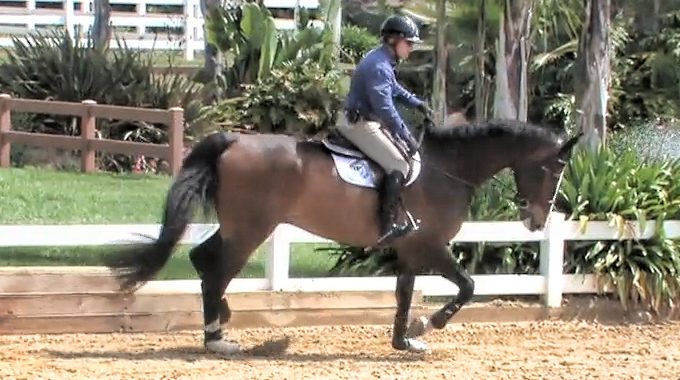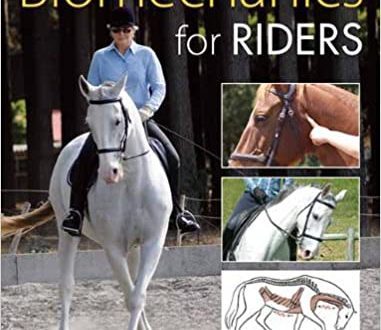
Exercises for Horses Heavy on the Forehand
Exercises for Horses Heavy on the Forehand
Question. I’m renting a half-blooded 14 year old. We have a great time in the fields, but when I take dressage lessons, he becomes incredibly heavy in the front, placing the weight of his head on my hands. We are constantly striving to work within the best frame. What can be done to encourage the horse to move off the front?
Reply. Most horses tend to lean forward to some degree. Assuming that your horse has no conformation or health problems, it can be said that proper training will help you, thanks to which he will find the right balance. For my part, I can offer you some exercises. They will encourage the horse to shift the weight back and move ahead of the legs, which will undoubtedly positively affect his balance.
Training exercises are divided into two categories: longitudinal and lateral.
Longitudinal work is aimed at collecting and lengthening the horse’s frame and stride, while side work is aimed at making the horse flexible in the neck and back, which will allow it to remain straight. These two categories of exercises complement each other. They aim to create a well balanced and obedient horse. To begin with, I will suggest that you work on two longitudinal exercises that are necessary for balancing the horse and training him to move in front of the leg.
Adjust the horse’s response to your leg
This exercise teaches your horse to respond quickly to slight leg pressure applied behind the girth with vertical stirrups. It is the basis for creating momentum.
After stopping the horse, give a light push with your legs to propel him forward. If there is no response from the horse, back up the leg pressure with the whip by tapping it directly behind your boot. Until the answer is immediate and alive, don’t compromise! Do this exercise as often as needed until your horse’s reaction to the legs is immediate in all ascending transitions.
Learn to stop without pulling on the reins
To learn this skill, start by sitting deep in the saddle. The body is vertical. Keep your legs in contact with your horse’s sides, this forces him to straighten his hind legs. Move forward with an active step in contact. Contact involves a feeling of constant, even and elastic pressure in the hand, with your elbows relaxed and in front of your hips.
Work on moving the unyielding contact you feel in the horse’s neck and mouth, in your hands, through your hands, down into your back, and down into your pelvis. Move your tailbone forward, keeping your lower back flat and straight. Your perineum or pubic arch presses forward on the pommel. When you make contact in this way, your landing will become deeper and more secure.
Because the horse senses that you are not yielding, but by no means pulling, he will yield slightly to the snaffle, and that is when you will give him an instant reward – your arms are raised slightly, relaxing the joints, making contact soft, but without losing it. Your hands never pull, only they don’t yield – the knuckles of the fingers close. The negative force is converted by your good posture into a gathering control and strengthens your position. Once your horse has learned to stop well, you will be able to for a fraction of a second apply the same technique and repeat it to get the horse’s weight shifted back. This is another way of describing the control we call the half halt, the most important control that makes the horse obedient and balanced.
Below – two simple side exercisesthat will teach your horse to yield to the leg.
First – quarter turn to the front.
Move along the inside path or quarter line (for example, on the left hand). Ask the horse to make a quarter circle so that his hindquarters move counterclockwise around his left shoulder. Her neck should curve slightly to the left, allowing you to see the corner of her left eye. Your seat and torso should be relaxed, sit a little heavier on your left seat bone. Press the left (inner) leg in a place that is a few centimeters from the normal position – no more. Your right (outer) leg never leaves the horse’s side and is ready to propel the horse forward if it tries to step back. Create alternating pressure with your active left leg. Release the pressure when you feel your left sitting bone drop (this is because the horse’s left hind leg has moved). Ask for the next step in the same way – activate your leg and soften when you feel the answer. Ask for only one or two steps, and then move forward without hesitation, keeping the rhythm of the step. Encourage the horse to move a few inches forward with his left front leg while his left hind leg is crossing in front of his right hind leg.
Once your horse is good at the quarter turn on the forehand, you can introduce him to leg yield diagonally. Start this exercise by walking. First on the left side. Turn left off the track from the short wall of the arena onto the first quarter-line. Move straight ahead and then make a slight left setting (inward) so you can see the corner of the horse’s eye. Use your active left leg in the same way as in the previous exercise, pressing and then releasing pressure as you feel the horse move away from it. It will yield to your leg—forward and to the side—from the quarter line to the second track (about one meter from the wall) in a diagonal line at an angle of 35 to 40 degrees (enough angle to encourage the horse to cross its inside front and back legs in front of the outer legs). The horse’s body remains parallel to the long sides of the arena.
When you reach the second track, lead the horse straight for two or three steps, then change the position and leg yield back to the quarter line. When you can maintain a consistent rhythm during this walk exercise in both directions, try it at a trot.
You can also combine leg yielding with transitions between walk and trot. For example, starting with your right foot at a walk, turn right down the quarter line. Leg yield from her to track two. Next transition to trot, after reaching the second track, trot a few steps forward, change to walk, yield back to the quarter line and lift the horse into a trot. Repeat this pattern as accurately as possible and making transitions as quickly as possible.
By doing these basic exercises, you will be able to keep your horse balanced, keep him from falling on his forehand, and also encourage him to move ahead of his legs.
Raoul de Leon (source); translation Valeria Smirnova.





